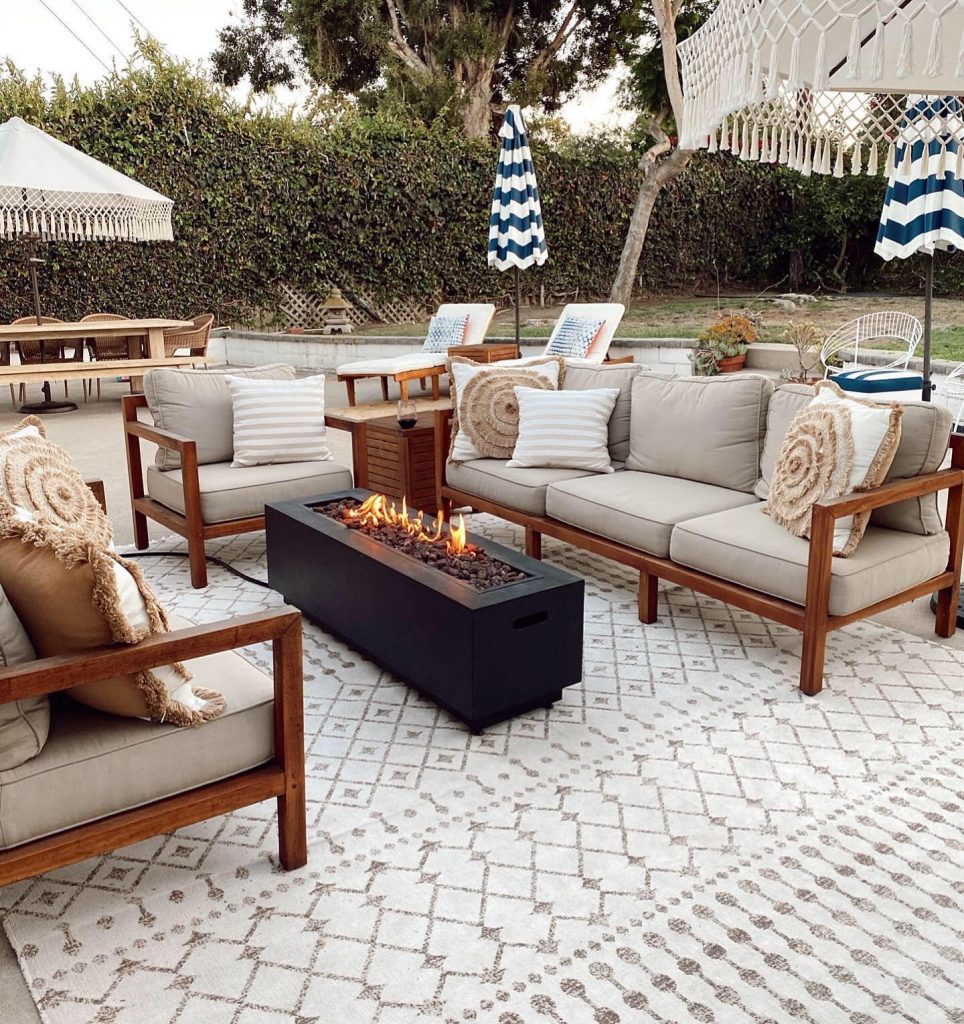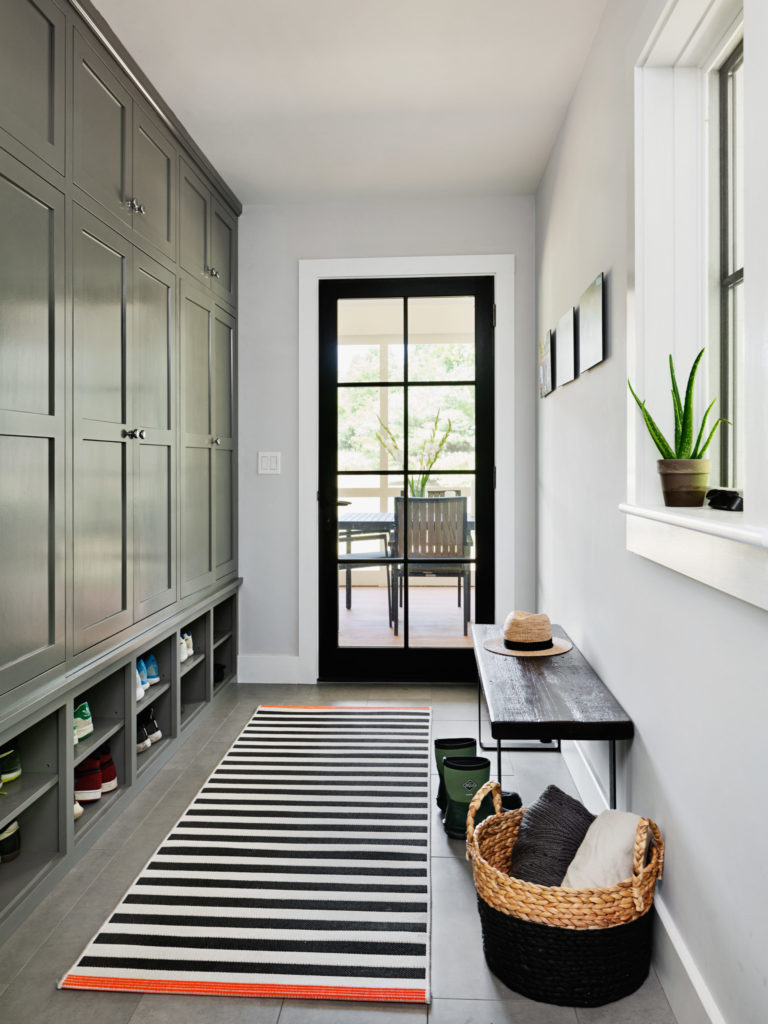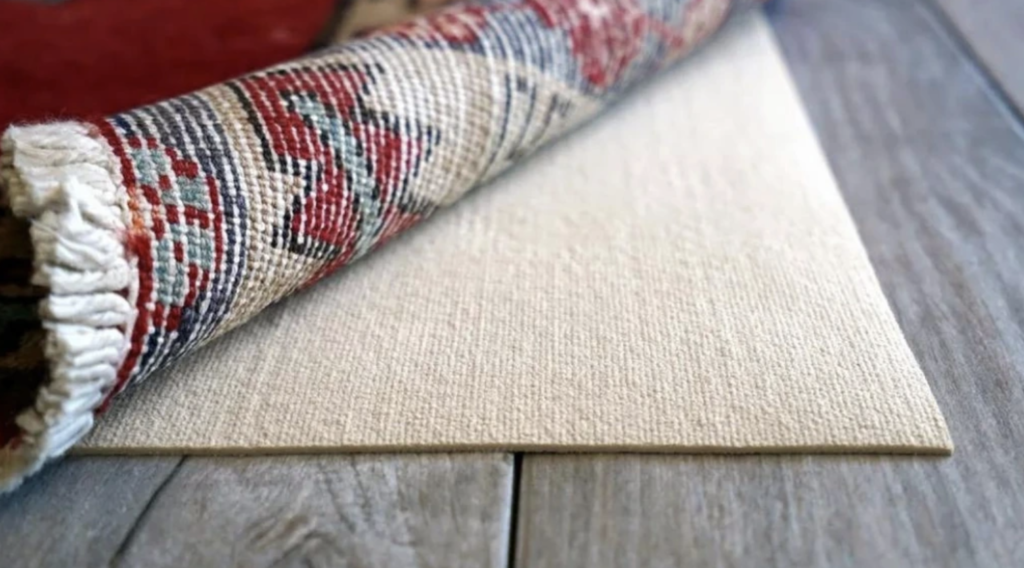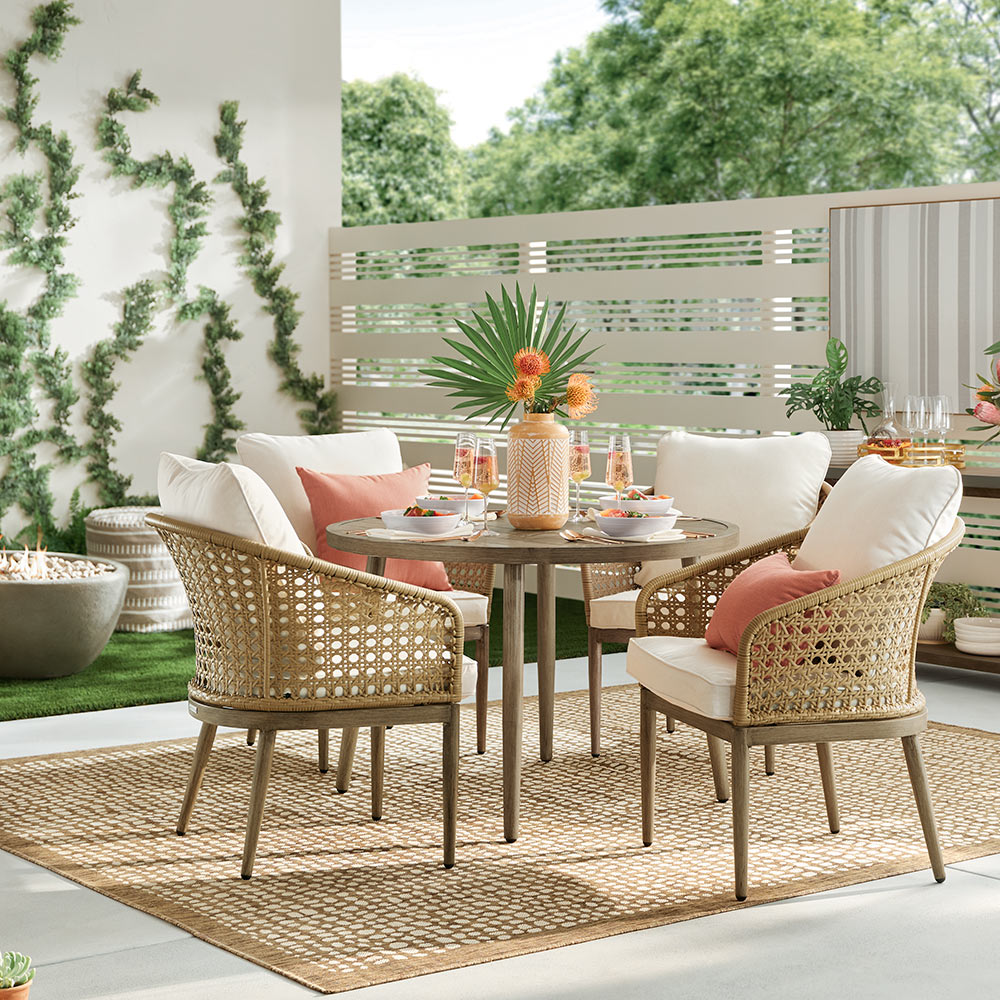
You might ask why it would be necessary to waterproof a rug. Our answer? You live on the lake! The lake lifestyle inherently calls for outdoor activities—swimming, kayaking, exercising, and much more. But even though outdoor living is a lot of fun, it can also cause a big mess. This is especially true for families with young children. Rugs quickly absorb rain and water, making them more susceptible to the eventual growth of mold and mildew. This can be unsafe and cause unpleasant odors at your lake home, but you can prevent it. Waterproofing rugs can help preserve flooring, reduce mold and mildew, and it’s quick and easy to do!
Focus Areas

It is best to waterproof rugs in areas of your home that typically get a lot of foot traffic. This includes mudrooms and entryways where people come and go with wet shoes, umbrellas, and coats. It’s also smart to waterproof rugs in your lake home’s bathrooms and laundry room. These areas are known for having humid conditions—along with wet feet and clothes.
Here’s How To Do It

Waterproofing your rugs doesn’t have to be complicated. First, you want to consider what areas of the rug to focus on. The upper fibers, underside, and any padding layers underneath are all important. Keep in mind that the underside is just as important as the top of the rug when it comes to waterproofing. As water can easily seep through the entire rug, you want to ensure that every area is sealed. This way, you won’t have to worry about unwanted mold or mildew.
There are several ways to waterproof a rug—all quick and relatively easy to DIY. Waterproofing techniques include rug pads, fabric seal sprays, and adhesives.
Fabric Seal Spray
This must be sprayed to prevent liquids from soaking into the rug. Not only does this help prevent rug stains, but it also helps keep the fibers from unraveling and thread slippage. Some safe and reliable options include sprays such as Scotchgard or Thompson.
Rug Pad
Rug pads help prevent unwanted water or humidity from being absorbed. The pads are placed and attached to the rug’s underside using a heavy-duty silicone adhesive. You can purchase rug pads at most hardware stores, and trustworthy options include Anchor Grip and Cloud Comfort.
Silicone Adhesive
Adhesives should be used in accordance with the rug pad that you select. Remember to choose a strong, heavy-duty adhesive that will last. For example, Loctite Clear offers a reliable and durable silicone adhesive that will endure heavy use.
Testing Time!

Now that you know how to waterproof your rug, it’s time to test it! It is best to wait a full 24 hours before testing the rug to ensure the waterproofing layer is dry. To test, you will only need about a cup of water. Slowly pour the water onto the top surface of your rug.
- If it works, you will see the liquid bead up and run off the surface.
- If the rug absorbs the water, allow it to dry, and add a second coat of sealant spray.
So now you know how quick and easy waterproofing your rugs can be. It’s an excellent and beneficial way to prevent odor, reduce the risk of mold and mildew, and preserve your flooring while enjoying the lake lifestyle.

